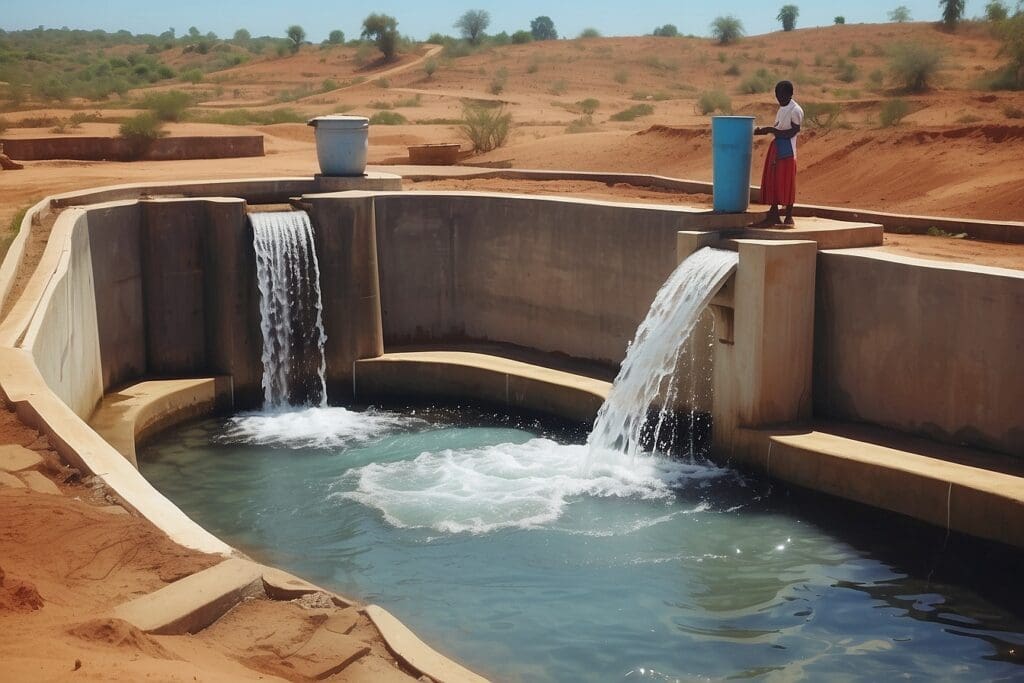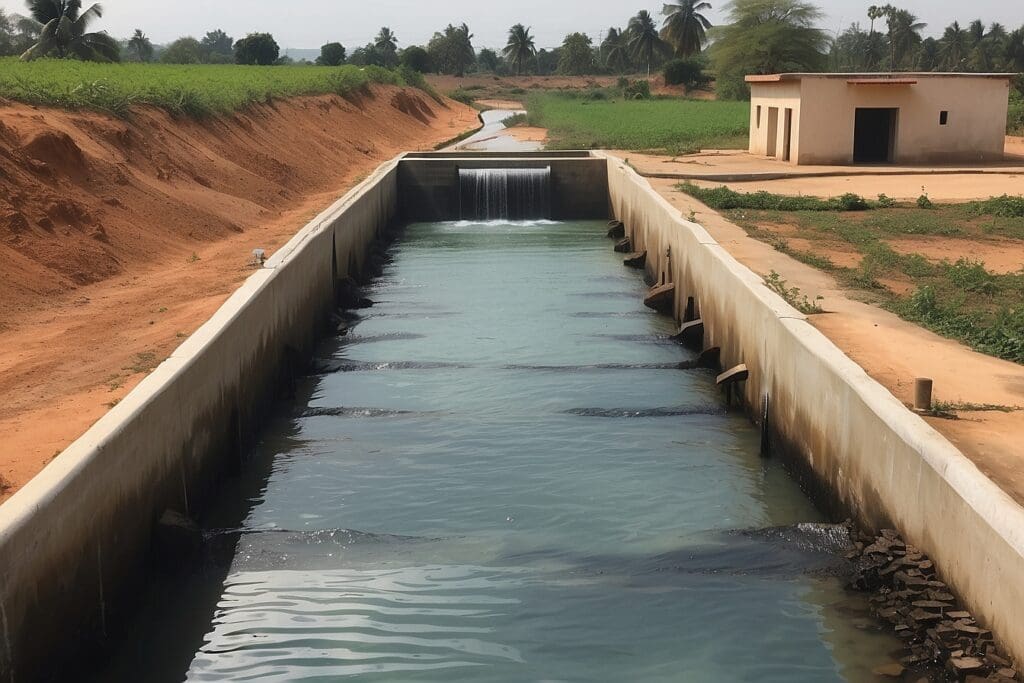The City of Davis is one of few cities in the State of California that still relies entirely upon groundwater. Currently, the city pumps groundwater at depths ranging between 700-2,700 feet below the surface, tapping into mostly intermediate aquifers.1 There are twenty-two wells installed throughout the city with two of the deepest wells expected to go online in a few months.2 This transition from intermediate to deep aquifers is necessary because minerals and heavy metals have been found to reach or exceed maximum concentration levels (MCLs) adequate for drinking water.3 Constituents such as salts, selenium, hexavalent chromium 1, and arsenic, inter alia, may have health and environmental implications when at or above the MCLs.4 Thus, in order to mitigate this potential health implication, Davis is shifting infrastructure towards deeper wells.
However, while procurement of water from deep aquifers appears to be a viable solution, there are growing concerns that groundwater will be quickly overdrafted and that the same issues regarding harmful concentrations of constituents will manifest.5 To address these concerns, the City of Davis, the University of California, Davis and the City of Woodland, hereafter referred to as the Project Partners, have jointly proposed a surface water project.6 The surface water project will draw water from the Sacramento River and act as a supplement to the current groundwater supply.7 Construction estimates are approximately $140 million, not including price of debt and additional finance.8 The project is most auspicious because the costs are shared between two municipalities effectively achieving economies of scale. Furthermore, this “conjunctive use” system facilitates cutbacks on groundwater pumping as groundwater will only be pumped during summer peaks and for backup use.9 The project “provides a reliable water supply to meet existing and future needs; improves water quality for drinking supply purposes; and improves treated wastewater effluent quality discharged by the Project Partners through 2040.”10 Despite the supposed benefits of this project, however, there have been a number of objections raised.
Opponents
Opponents of the project call attention to and enumerate a number of shortcomings inherent in the project proposal. Sue Greenwald, former Mayor of Davis, vehemently asserts that the deep-water aquifer supply has been projected to sustain the Davis populace for decades.13 According to Greenwald, the deep aquifer is extremely clean and would effectively eliminate the use of residential water softeners. She claims that water quality has never been an issue and that the City of Davis is in fact meeting standards both for drinking water and effluent. Greenwald argues that the project is much too hasty and that the initiative fails to provide specifics regarding costs or rates.14

Opponents emphasize the costliness of the endeavor and criticize the cursory nature of the proposal. The State Water Resources Control Board (SWRCB) approved the City of Davis and the City of Woodland for a forty year water right permit and as some opponents have pointed out, deep aquifers won’t dry up and blow away.15 Thus, the opponents implore the community at large to reconsider their stance and to vote with prudence. Greenwald mentions that the reason why the project is time sensitive is because Woodland is more at risk of not meeting effluent water quality standards. Unlike Davis, Woodland has not developed their groundwater and cannot undertake this project alone. However, if Davis withdrew from this project, Woodland would not be severely penalized if they looked into other alternatives.16
The most compelling of arguments lies in the wrath of price hikes. Current rates are expected to more than triple by 2018 as household water bills may come to $137 per month. Furthermore, Davis residents will bear a larger percentage of rates per gallon of water than Woodland, provoking inquiry about project equity.17 Greenwald also calls attention to the issues inherent in a public-private partnership: “ribbon-cutting syndrome.” When a multinational corporation comes in to build and operate the water treatment facility, they enter into an agreement with the city stipulating that they own the water project for “x” amount of years. Thereinafter, the cities will be the sole proprietors. However, the problem is perpetuated when these companies strategically pour money into the council in order to renew their contracts.18
Lastly, Greenwald asserts that water use in Davis is declining due to conservation. Davis’ groundwater is not in imminent danger of being overdrafted or contaminated by the prevalence of minerals and heavy metals. The quality and quantity are currently maintained.19 Many critics believe that the cities have an ulterior motive to induce growth and development in Davis. With the inflated rates, however, Davis’ property values are expected to fall, having the opposite affect of growth as homebuyers are driven away from the market. Greenwald advises against voting “yes” on Measure I, as it is too tenuous of a project to jump into at the moment.
Proponents
In response to the opponents’ concerns, the proponents of the project have offered numerous counterarguments to refute opponents’ claims. Mr. Diemer, a representative of the Woodland-Davis Clean Water Agency that spearheaded the project, states that this project will improve the quality of water being consumed by Davis residents.20 Integrating the surface water project into Davis’ current drinking and waste water system would effectively “decrease concentrations of salt and selenium in our wastewater.”21 The absence of these minerals provides environmental benefits and mitigates the impacts on waterways and wetlands. Furthermore, with the surface water project dissolving the concentration of these minerals to below MCL’s, we bypass the costliness and difficulty of removing these minerals. Thus, this project will provide the City of Davis with “high quality drinking water and much needed new infrastructure.”23
The advancement towards siphoning water from surface water is necessary because it significantly decreases reliance on such a valuable, non-renewable asset. Even if deep aquifer supply warrants against the surface water project, proponents emphasize the shortsightedness in relying fully upon groundwater.24 Currently, there are approximately six deep aquifer wells installed amongst many intermediate and shallow wells. The replacement and revamping of deteriorating wells is an expensive endeavor.
The Project Partners advocate for the advancement of the project because “rates will rise regardless of the project and Measure I ensures investment in a cost-effective, long-lasting solution.”25 The Woodland, Davis Partnership reduces costs by over $25 million making it much more affordable than if Davis executed the project by itself. Additionally, Sacramento River’s surface water requires less softening and will not require the “replacement of corroded fixtures,” thereby reducing expenses at a household-by-household basis.26 In the end, out of the twenty-four alternatives that were examined, the surface water project is the most viable. The Water Advisory Committee (WAC) constructed an equitable rate system that is comparable to rates of many northern California cities. Proponents emphasize that the surface water project is the most sensible option today and tomorrow.
Conclusion
On March 6, 2013, the surface water project was approved. From a policy perspective, this decision is prudent in that it averts any future risk of violating water quality standards. Regardless, the advancement of this project is wise. This surface water project is inevitable. If it is the case that diversion of surface water is inevitable, it does not make sense to install more deep aquifers, which will be costly, only to procure surface water in the end. The surface water project is an investment, albeit a costly one, that will effectively protect the City of Davis from any future water supply conflicts. There is a saying that the return of investment is more lucrative when non-monetary.





